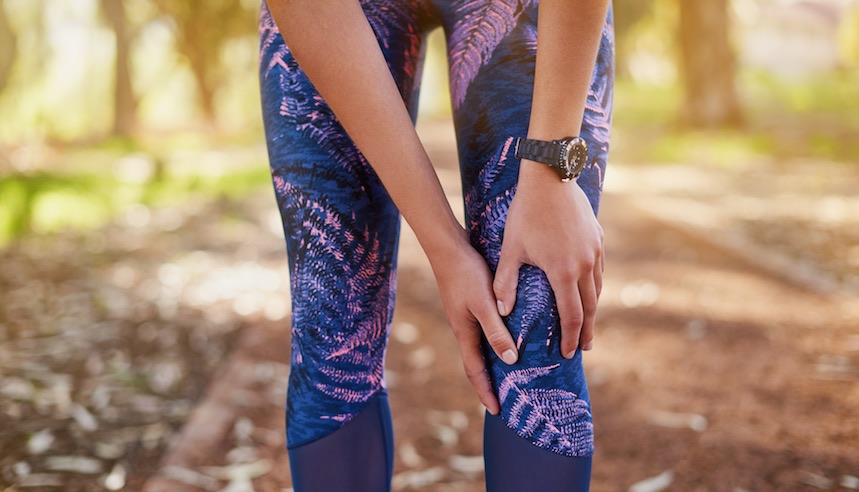Perhaps the new year has inspired you, like so, so many others, to increase your fitness. But as you up your hours at the gym or experiment with new workouts on ClassPass, you might find that your body can’t keep up with your newfound enthusiasm. How can you tell if your sore, achy muscles are a result of being out of shape, or a sign you’ve overdone it to the point of injury?
We talked with nutrition, wellness and fitness coach Jenn Menzer about what causes these aches and pains, plus tips for preventing and recovering from them.
What causes muscle soreness?
“When we’re exercising, we’re creating stress on the muscle, and the soreness comes from a dramatic increase in intensity,” Menzer explains. As our muscles lengthen and contract, small tears form in the muscle fibers. When we’re exerting ourselves, especially during an exercise we’re not used to, the feeling of soreness is the muscle’s response to learning the new motion, be it lowering down into a squat or pedaling at high speed during spin class.
Ever notice sometimes you’re sore right away, and other times, it takes a few days to feel the impact? There are actually two different kinds of muscle soreness, she explains. One is known as “acute muscle soreness,” which occurs immediately after your workout. The other is “delayed onset muscle soreness,” known as DOMS, which happens between 48 to 72 hours after.
How do you know if what you’re feeling is normal?
Being a little sore, “especially when you’re engaging in a new exercise routine or something more intense,” is expected, says Menzer. To determine if you’ve overdone it or might be injured, you have to listen to your body — and it should be fairly intuitive.
If you’re experiencing a sharp, shooting pain, or notice any inflammation, then you may have injured yourself.
“‘No pain, no gain’ is a load of crap,” she says. “That tends to turn into an overuse injury over time, if you’re overtaxing the muscle.”
If you’re feeling more of a dull throb or a slight burn, monitor it over a few days and see if it subsides.
“It’s about learning your body and knowing if something is persistent, it’s best to check it out,” she says.
How can you prevent it?
Go slow. “As a trainer, I gradually increase my client’s intensity in small increments,” she explains. If you’re heading into a brand new workout challenge, try to curb your competitive spirit and aim for more of a 6 or 7 in intensity, instead of a 9 or 10.
“Mindfully remind yourself that you’re not yet an expert; even if you’re in peak shape, it’s still a new experience,” she recommends. “Go at it for a challenge but not total exhaustion.”
You should also make sure you warm up before you workout. Menzer recommends foam rolling before exercise, to help “increase your range of motion and decrease risk of injury.”
What’s the best way to recover?
This depends on the severity of your symptoms.
“If you’re experiencing intense discomfort, take off 24-48 hours, or do something gentle, like restorative yoga to stretch out, or meditation to calm your mind down,” she advises.
If there is any sign of injury or inflammation, icing is the way to go. But if you’re just feeling sore, apply heat, using a heating pad or soaking in the tub.
She recommends adding a mixture of 1 cup epsom, 1 cup sea salt, 1 cup baking soda, 1 cup apple cider vinegar to your bath (kind of like a homemade bath bomb) to help relax your muscles.
Another technique is hydrotherapy, in which you alternate between heating and cooling: ten minutes with a heating pad to relax your muscles, ten minutes of icing to decrease the inflammation.





















